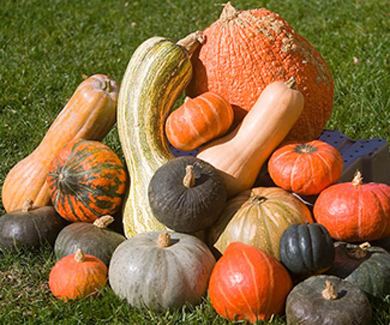Winter Squash
Winter squash is a taxonomically diverse group of vegetables in the Cucurbita genus. Cultivars may belong to one of several species: Cucurbita pepo (acorn and spaghetti squashes), C. maxima (hubbard, buttercup, and kabocha), C. moschata (butternut), and C. mixta (cushaw). Because these squash are harvested when mature and rinds have hardened, most types can be stored for use during the winter.
Marketing

Fresh market options for Kentucky-grown winter squash include wholesale markets, restaurants, farmers markets, community supported agriculture (CSA) subscriptions, produce auctions, and roadside stands. Local grocery retailers are another option. In retail markets, point-of-purchase materials such as recipes and other preparation tips are effective marketing aids for increasing winter squash sales. Some winter squash types can be stored throughout the winter to extend the marketing season if humidity is maintained around 50-70% and temperature around 50-55° F. Although winter squash does not move in the same volume as summer varieties, the quantity demanded of winter squash is strong as more people diversify their diets. A greater use of winter squash for decorative purposes has also helped increase demand. The key to maintaining farm profitability for winter squash in Kentucky may be storing the squash and arranging off-season sales when prices are higher.
Production
Winter squashes differ greatly in shape, coloration, size, skin texture and flavor. Flesh can vary in consistency from smooth to fibrous to stringy. Because of the great diversity among squash types, it is important to select those with the qualities in demand by the intended market. Once that is determined, growers should select well-adapted cultivars and look for disease and pest resistance, if available.

